
Build a linear accelerator model
Build a linear accelerator to demonstrate spallation – the source of high-energy neutrons used by the new European Spallation Source being built in Sweden.

Turn your students into particle detectives and spark an interest in particle physics with an engaging and inexpensive science show for all ages.
Science shows are stage performances that connect various demonstrations and experiments through a common science-focused storyline. Done right, science shows can lead to increased learning and various positive affective outcomes.[1] Furthermore, science shows are highly adaptable to various contexts and audiences, which makes them a fantastic activity for introducing newer topics to various audiences – for example, introducing particle physics to audiences in countries with limited resources. The Particle Detectives science show aims to do just that: enable science educators and communicators to bring the complexities of particle physics to new schools, festivals, and other events in a light and entertaining way.
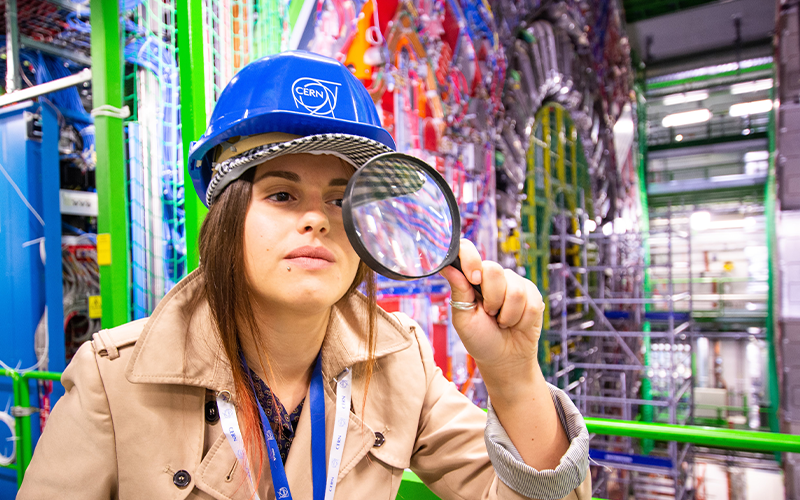
The show is loosely based on CERN Science Gateway science shows about particle detectors, and it follows the storyline of how interactions allow scientists to detect the invisible world around us. However, instead of expensive equipment, this show uses easily accessible everyday materials and offers plenty of flexibility for modifications.
The show introduces several important concepts in particle physics.
The full script, details for the Particle Detectives show, including the script, the experiment guide, and additional experiments, are available on the Particle Detectives website.[2]
Michael started developing the Particle Detectives science show in Summer 2023 under Anja’s guidance. He was inspired by how CERN brings together the best scientists from around the world. Similarly, the Particle Detectives science show brings together experiments from the best teachers around the world. Most of the experiments in the show were inspired by the teachers and scientists Michael met through his project My Favourite Experiments,[3] through teaching networks like Science on Stage (SonS) and Scientix, and by performing his first show Experiments – World Tour![4]
Before finalizing the script, Michael travelled to several countries to test the show in different contexts and performed variations in eight countries (Kazakhstan, Italy, Serbia, Montenegro, Bulgaria, France, Spain, and Ghana). Each country provided new opportunities to hone the experiments and adapt the show to different audiences and locally available materials. Here, he shares his challenges, successes, and the lessons learned. A key feature of a good science show is that it can be adapted to different contexts and audiences, and it is hoped that this report will inspire others to try out the show in their schools or communities.
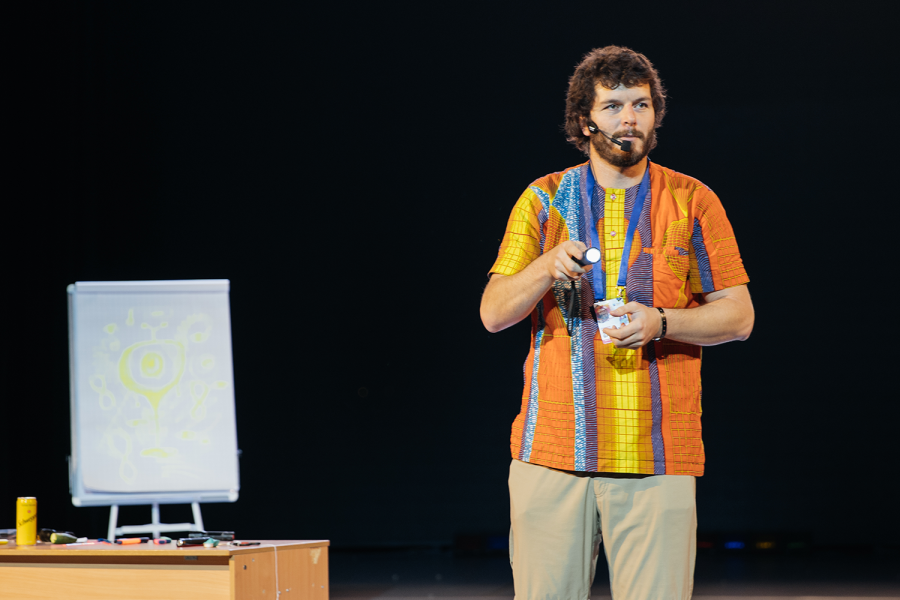
The first performance was at ProNRG Fest and SonS Kazakhstan National Festival in Astana, an exciting event with teachers and families coming from all over Kazakhstan, and the show was live translated into Kazakh and Russian!
Lesson learned: the original script didn’t include fire, but the ProNRG Fest organizers complained that “particle physics is too boring” and asked for a more interesting show “with fire, explosions, or something…” A coloured fire tornado did the trick and supported the storyline of seeing the invisible, so it has been used ever since!
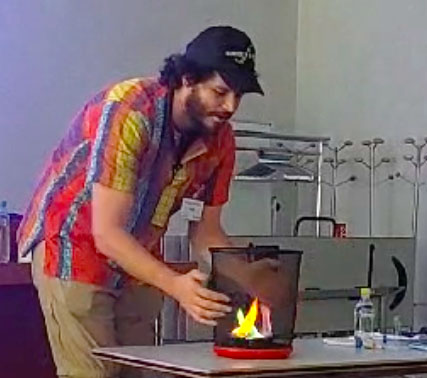
Italy featured a bilingual show for a predominantly adult crowd at Masseria La Cattiva winery. The adult crowd was a fun opportunity to make cheekier jokes (all of which Anja cut from the final version of the script!). It was also fun to include wine-related objects in the experiments and enjoy some of the fruits of his labour!
Lesson learned: it was hard to get all the necessary equipment for the original show while working at the wine harvest, but with a bit of improvization a new experiment, called ’Bernoulli Circus’ proved to be a great addition to the show. As such, we highly recommend it for doing this show with less equipment – or for scaling it up. This, and other variations, are assembled together in the annex script and experiment guide, to provide options for different contexts, especially in resource-limited settings.
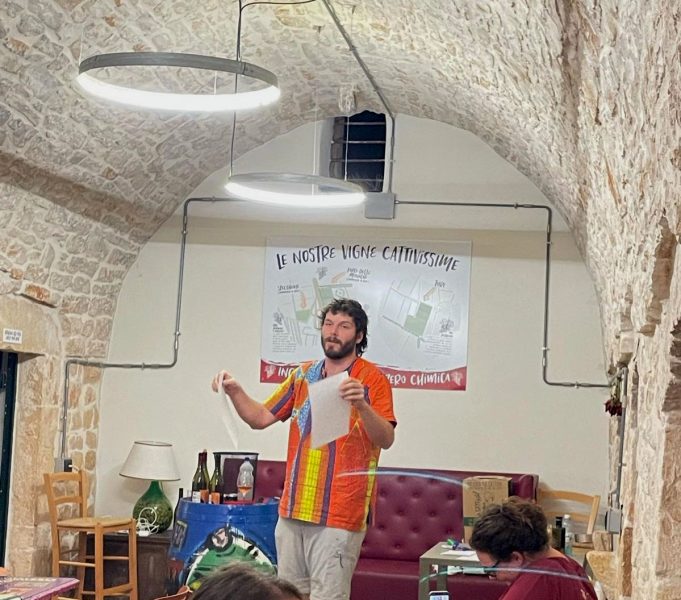
The excellent teachers and warm welcome make Serbia a particularly wonderful place to visit schools and test out new experiments. The excellent students and staff at Gimnazija Sveti Sava in Pozega were the best demonstration to date that the Human Multiplier can work well with an enthusiastic audience!
Lesson learned: at the Institut Français of Novi Sad, air vortexes interacting with long-haired volunteers or travelling through a room full of bubbles provided a useful analogy for LHC subdetectors. Just like hair, calorimeters absorb particles to measure their energy, whereas trackers only interact weakly with particles to give information on their position but little information about their energy, similar to the bubbles.
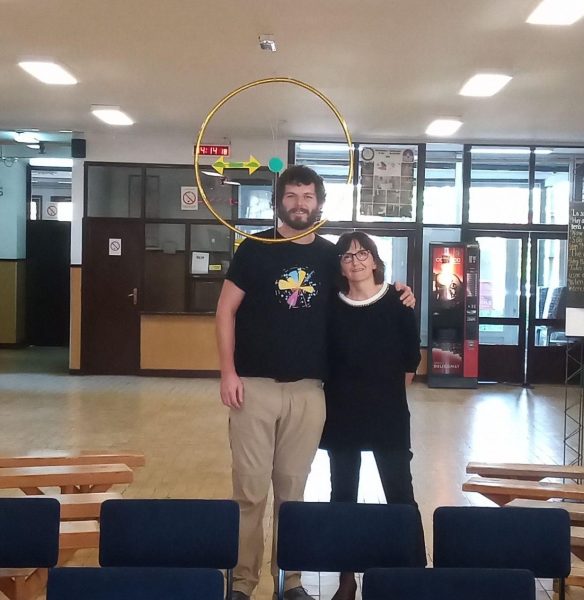
Particle Detectives was given a warm welcome in Montenegro, where it was performed at the Montenegro Science Days as a combined show and workshop, and at a couple of schools around Podgorica.
Lesson learned: super-cheap experiments can be used to encourage students to repeat the experiments themselves. Examples are ’Paper Race’”, ‘Bernoulli Circus’, and the ’Straw Trick’.
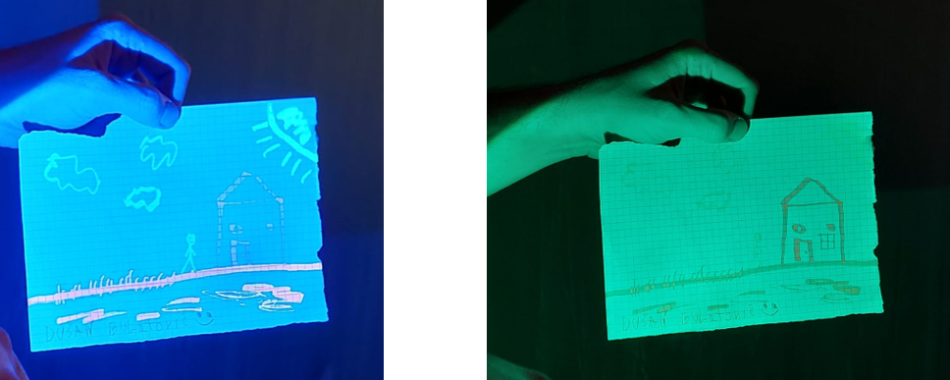
Performances for teachers at Science on Stage (SonS) Bulgaria and for PhD students at Sofia University were excellent opportunities to get advanced feedback.
Lesson learned: ideas for explaining colour charge using RGB lights and particle interactions with magnetic fields using Lenz’s Law demos were incorporated.
At Ho International School, Michael first performed for older students (ages 10–13), then spent the rest of the day coaching them to perform for younger students (ages 6–9). This motivated the older students to really engage with and understand the experiments and made the show more relatable and accessible for younger learners because it was in the local accent and dialect and framed in the context of local experience and understanding. This same model was used to celebrate the International Day of Women and Girls in Science, with girl-only performances for students of nearly a dozen schools in the Central and Eastern Regions of Ghana.[5]
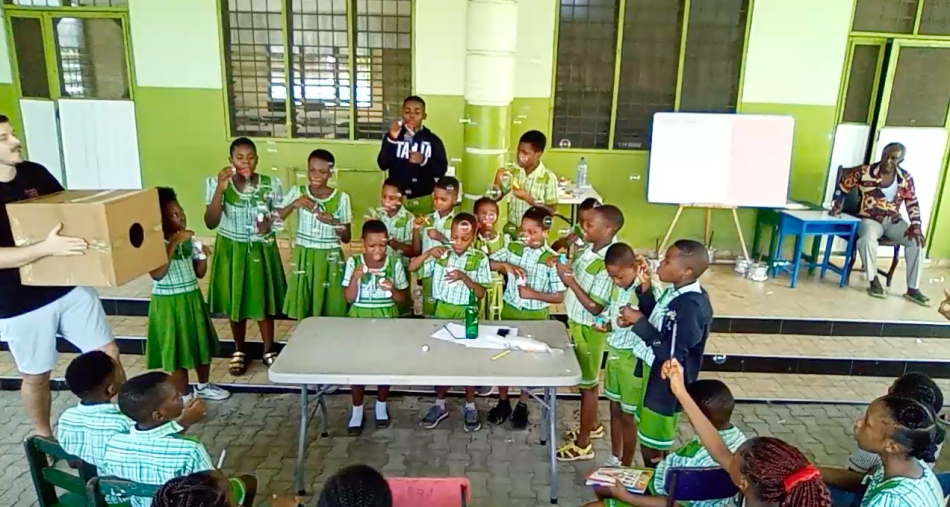
Teaching students to learn through performance and teaching is a model Michael has used extensively in his teaching and as a UNESCO volunteer on the myPERFORM Project.[6] This same technique was used in March at the Volta Regional School for the Deaf: Michael first performed for older students, with the headmaster translating into sign language, then together they coached the students to perform the show for younger classmates. There is already interest around Europe for Particle Detectives to be used in this way, breaking down language barriers by training older students in English to perform for younger students in their local/national language.
Lesson learned: students can be powerful multipliers. Teaching older students can be both a powerful learning experience for them and a way of making the show more accessible for younger learners.
Particle Detectives has been developed to be adaptable and easy to run in any context you can think of: from international science festivals to small classrooms, from capital cities to remote villages, from schools to wineries to birthday parties!
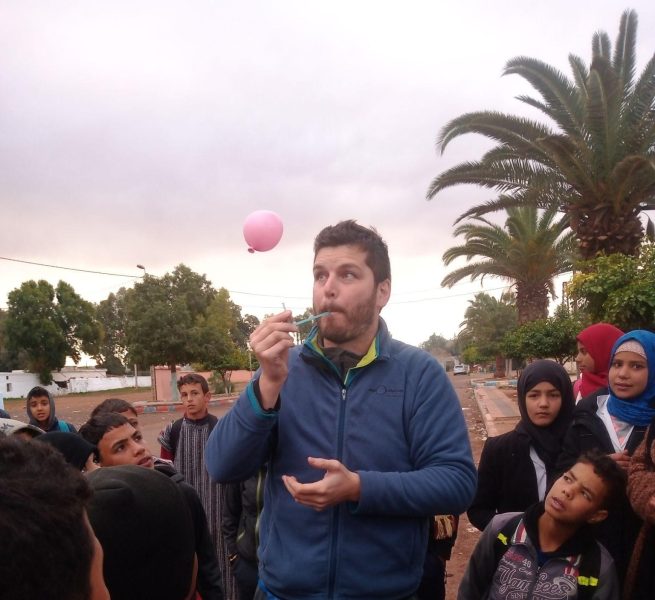
The online materials, which contain the script, experiment guide, and accompanying annexes for ultra-low-resource settings, should provide enough detail for most teachers, scientists, and enthusiasts to put together their own performances, but if you need help or individualized advice, or simply want to share a success story or ideas to improve the show, don’t hesitate to contact Michael and Anja at particledetectives@gmail.com.
Michael will continue to travel the world training teachers and performing science shows, often for free, following his belief that learning should be fun and interesting. If you are in Europe, get in touch; he will likely be somewhere close in the near future and is usually eager to make detours to give free workshops and shows.
[1] Austin SRP, Sullivan M (2019) How are we performing? Evidence for the value of science shows. International Journal of Science Education 9: 1–12. doi:10.1080/21548455.2018.1532620
[2] Gregory M (2024) Particle Detectives: A low-cost portable science show (Version 1). Zenodo. doi:10.5281/zenodo.10611185
[3] Gregory M, Varnica G, Panagiotis P (2022) My Favourite Experiments – Connecting Teachers and Ideas. Science in School 58.
[4] Michael Gregory’s Experiments–World Tour: https://www.scienceonstage.fr/experiments-wt/
[5] Application of the multipliers approach in Ghana: https://t-tel.org/2024/02/29/creating-role-models-to-inspire-tomorrows-scientists-a-m-e-zion-girls-senior-high-school-celebrates-international-day-of-women-and-girls-in-science
[6] Read about the PERFORM Project: www.perform-research.eu

Build a linear accelerator to demonstrate spallation – the source of high-energy neutrons used by the new European Spallation Source being built in Sweden.
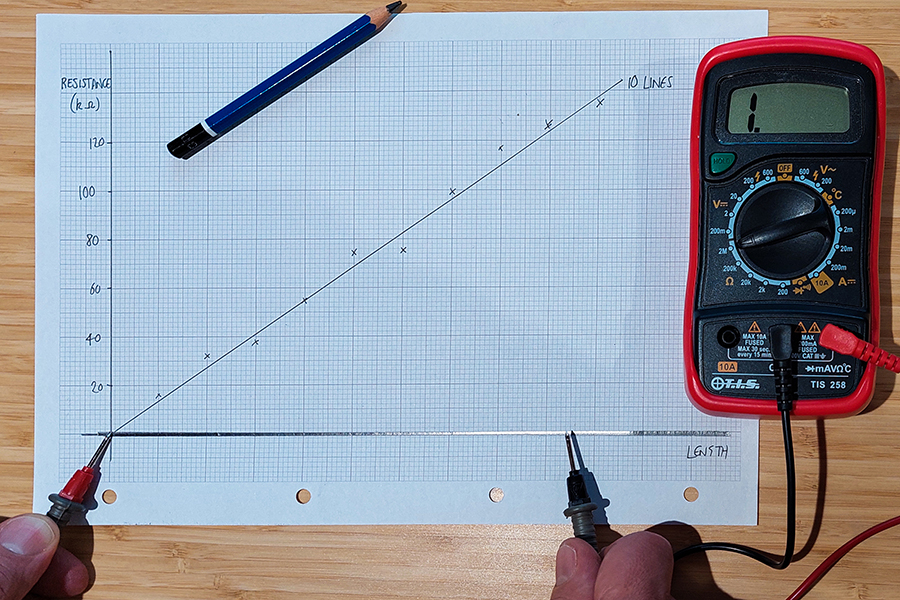
Sweet success: everyday objects can be used to demonstrate fundamental physical principles in an engaging…
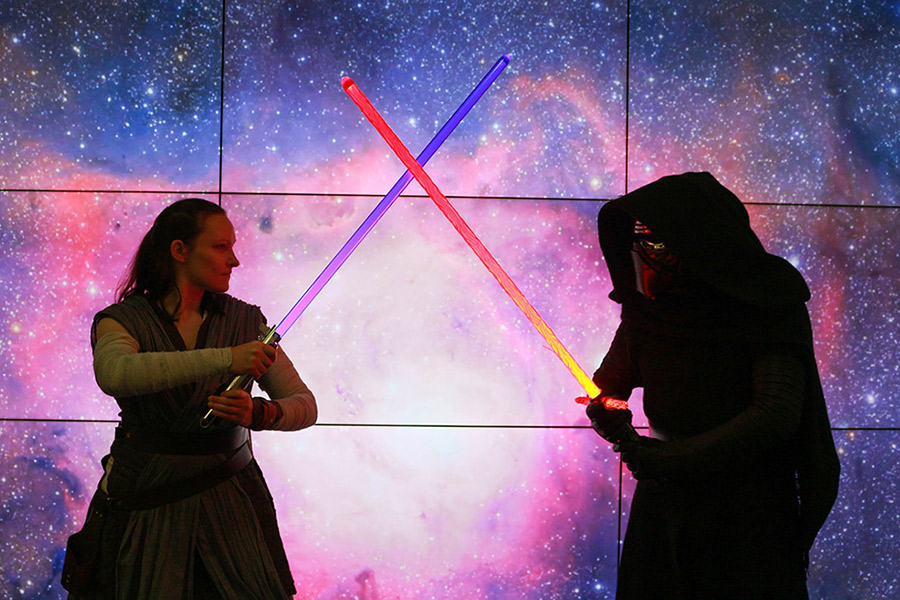
Science fiction can be an engaging starting point for scientific discussions. Learn how one research group is using Star Wars to introduce students…